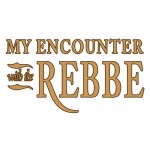Mrs. Chaya Rivka Mochkin
When I married my husband, Reb Leibel Mochkin, I was living in Paris as a refugee following the Second World War. In 1952, while I was expecting our first child, we emigrated to Montreal, Canada, and almost as soon as we arrived, my husband went to New York to see the Rebbe.
“When you have a son,” the Rebbe told him “you should name him after my father-in-law,” referring to Rabbi Yosef Yitzchak Schneersohn, the Previous Rebbe, who had passed away two years earlier. I gave birth to our daughter Rochel shortly thereafter and two years later we had a son, whom we named Yosef Yitzchak, as the Rebbe had requested.
Although I didn’t look sick after the birth, I lost a lot of blood, and I barely ate anything for the next two months. When I came home from the hospital, with two babies to care for, I felt so weak that I could barely hold a glass of water. A couple of weeks after that, I started to have terrible waves of pain in my back. After being checked out, the doctors established that I had developed gallstones during the pregnancy and I would need surgery to have my gallbladder removed. Being only twenty years old, it was quite rare to need such an operation.
The surgery was scheduled for a Tuesday morning at the Royal Victoria Hospital in Montreal. The next day happened to be the Tenth of Shevat, marking the anniversary of the Previous Rebbe’s passing, and my father-in-law, Reb Peretz Mochkin, traveled from Montreal to attend the special gathering with the Rebbe in New York.
Several hours after my operation, my medical situation turned critical. My liver stopped functioning, my blood pressure dropped, I fell unconscious, and the doctors decided that I needed to have another operation – the second within 24 hours.
“I operate nearly 365 days a year, so I don’t even remember who my patients are,” my surgeon later said, “but I remember that you didn’t let me sleep for three nights.” I had entered a critical condition during that time, and every minute counted. (more…)





